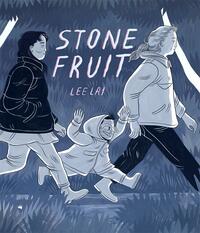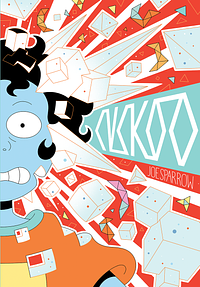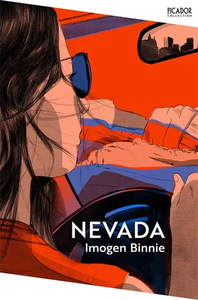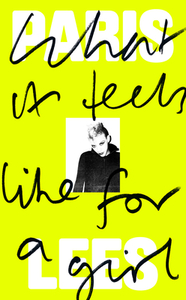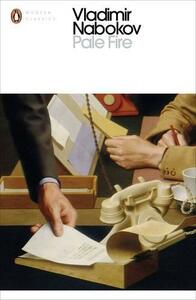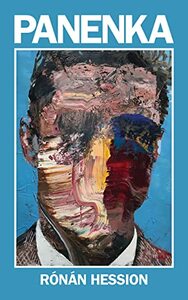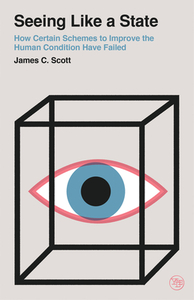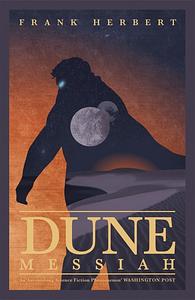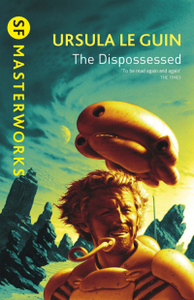Take a photo of a barcode or cover
mars2k's Reviews (234)
emotional
hopeful
inspiring
reflective
sad
“It’s not soft all the way through, babe. You gotta take it slow.”
Tender. Tough. Bittersweet. I love the artwork – it manages to be well thought out yet organic at the same time, and the melancholy atmosphere is captured perfectly in the blue-grey washes.
CONTENT WARNINGS: transphobia, queerphobia more generally, religious trauma, depression
adventurous
reflective
slow-paced
Nevada is something of a cult classic, a landmark of trans literature. Does it live up to the hype? Hard to say. I want to say something pithy like “Nevada walked so Detransition, Baby could run” but, while there is some truth in that, I feel like it undersells Nevada. It’s a good book in its own right. It’s not for everyone but it doesn’t have to be; I appreciate that Binnie wrote a book that’s a little unorthodox, instead of taking the radical idea of “trans fiction by trans authors for trans readers” and compromising to make it more palatable to a wider audience.
The stream of consciousness writing style and the abrupt ending may seem off-putting but they work. The POV characters, Maria and James, are stuck in their own heads, and they’re unable/unwilling to communicate effectively or to form meaningful relationships with others. They’re not irredeemably awful but they are certainly flawed, and they do make you want to grab them by the shoulders and shake them sometimes. I suppose that’s how Maria feels about James. Her plan to tell James he’s trans because he reminds her of her younger self, and to essentially redo her twenties through him is silly. It’s understandable on a purely emotional level but it was a doomed project from the start. Of course it doesn’t come together with a neat and tidy resolution.
Nevada is a book about failure. If you expect anything else, you’ll be disappointed.
CONTENT WARNINGS: sex, relationship issues, transphobia (largely internalised), dissociation, drug use
emotional
funny
hopeful
lighthearted
tense
fast-paced
“Would ya rather have loadsa people hate ya an’ loadsa people love ya, or not be hated by many people but also not be loved by that many people?”
Fucked up but presented in a “c’est la vie” kind of way. The memoir follows Lees throughout her adolescence, with higher highs and lower lows than most. She’s so naive to begin with. I suppose that only makes it all the more gratifying to watch her mature and figure herself out.
Charismatic. Sympathetic. I’d love to read a follow-up.
CONTENT WARNINGS: homophobia, transphobia, racism, child abuse, adult/minor sex, grooming, violence, drug use, psychosis, suicidality, death, imprisonment
mysterious
reflective
slow-paced
I don’t have particularly strong feelings about this book. I can see what Nabokov was going for (taking the idea of an unreliable narrator to an extreme degree and using that to explore fiction within fiction), but the book just didn’t hold my interest. I considered calling it a DNF but I powered through and yeah, I don’t have much to say about it. I think maybe it’s a little too enigmatic? I don’t know how to read Pale Fire – the poem or the novel.
I don’t know. I want to like this book – and in some ways I feel like I should – but I just don’t care for it. Oh well.
CONTENT WARNINGS: death, murder, suicide, delusion, obsession, stalking, implied csa, homosexuality equated with pedophilia, the word n*gro used repeatedly
dark
reflective
sad
medium-paced
“if it weren’t for those boots, good grief / I’d bat-fly to bell towers easy.”
I liked some of the earlier poems, the ones detailing Henson’s childhood. They were morbid but with a sweetness to them. The book does lose steam later on (which kind of works? because it coincides with talk of depression and grief); the poems become less distinct and less interesting. Or maybe I just got bored.
CONTENT WARNINGS: death (including the deaths of parents and friends), suicide and suicidality, mental illness, body horror
CONTENT WARNINGS: death (including the deaths of parents and friends), suicide and suicidality, mental illness, body horror
reflective
medium-paced
An easy read – I can see this being studied in secondary schools. But it’s also a difficult read because there isn’t a plot to follow and invest in, just a collection of emotionally stunted characters who refuse to communicate with one another. It’s frustrating. And it makes the talk-therapy dialogue seem even more out of place. There’s this air of reflectiveness that isn’t backed up with real introspection or character growth. It’s surface level sentimentality that goes nowhere. The titular Panenka and the other maladjusted men he’s friends with don’t ever learn to talk about their feelings or take responsibility for their actions, they just wait around until someone (almost always a woman) comes along to take care of them.
While I’m on the topic of sexism I have to talk about Vincent. He makes my skin crawl. There’s a scene towards the end of the book that I’ll outline here: Marie-Thérèse wants to break up with Vincent because she doesn’t love him any more. Vincent twists her words and reframes everything she says. He gets passive aggressive. He weaponsises their son, Arthur, using him to guilt trip her into staying. At the end of the book, Marie-Thérèse seems to have tricked herself into thinking she must still love Vincent, and they and their son go out for a meal like a Happy Family™.
To me, it’s horrific. But I don’t think it’s meant to be read that way. Sometimes it can be hard to tell what’s deliberately uncomfortable and what’s an unfortunate oversight on the author’s part. I suppose that’s what you get when you’re so preoccupied with the feelings of men that your female characters get utterly sidelined.
So what is Panenka? It’s a book full of self-pity and teenage middle-aged angst. It’s a book that wants to talk about men’s mental health but isn’t sure what to say. It’s a book I had high hopes for and was let down by. I’m not going to tell you not to read it, but man... it’s sticking with me for the wrong reasons.
CONTENT WARNINGS: chronic pain (migraines), cancer, depression, guilt, grief, abandonment, cheating, men being generally useless and/or nasty, sexism
challenging
informative
slow-paced
Seeing Like a State drags. It easily could have been edited down to under 200 pages, and it would have been a better book for it. Scott gives multiple examples that demonstrate the same thing – it gets repetitive. There is such a thing as being too thorough.
That said, this is not a bad book. Scott gives some valuable insights into modernism and how it strives for legibility, and he clearly lays out the distinction between data and what he terms “mētis” (practical knowledge based on experience; wisdom, knack). The book got me thinking about utopianism; we often use the term to refer to any instance of naive idealism but perhaps it’s more effective in discussing statecraft/city planning, ie: attempts to artificially construct a “perfect” society, doomed by the fact that perfection is a myth and not a viable end goal.
Some quotes I liked:
“In dictatorial settings where there is no effective way to assert another reality, fictitious facts-on-paper can often be made eventually to prevail on the ground, because it is on behalf of such pieces of paper that police and army are deployed.”
“The utopian, immanent, and continually frustrated goal of the modern state is to reduce the chaotic, disorderly, constantly changing social reality beneath it to something more closely resembling the administrative grid of its observations.”
“The utopian, immanent, and continually frustrated goal of the modern state is to reduce the chaotic, disorderly, constantly changing social reality beneath it to something more closely resembling the administrative grid of its observations.”
“The temporal emphasis of high modernism is almost exclusively on the future. [...] The past is an impediment, a history that must be transcended; the present is the platform for launching plans for a better future.”
CONTENT WARNINGS: surveillance, imperialism and colonialism, eugenics, references to racism, sexism and various other -isms based on categorisation and segregation (with mentions of apartheid and the holocaust), war, disease, famine, forced relocation, forced labour, police brutality
UPDATE DECEMBER 2024: I'm upping my rating for this book from 3.5 to 4.0. I haven't reread it, but still I want to tweak my review in recognition of the impact it has had on me. It has shaped my thinking and I reference it fairly often. Does it drag? Maybe. Perhaps I should revisit it to check, because I might have just been in a bad mood when I read it the first time haha. But yeah it's definitely a book I would recommend
UPDATE DECEMBER 2024: I'm upping my rating for this book from 3.5 to 4.0. I haven't reread it, but still I want to tweak my review in recognition of the impact it has had on me. It has shaped my thinking and I reference it fairly often. Does it drag? Maybe. Perhaps I should revisit it to check, because I might have just been in a bad mood when I read it the first time haha. But yeah it's definitely a book I would recommend
dark
reflective
sad
medium-paced
“Disengage . . . disengage . . . disengage . . .”
Dune Messiah is difficult to rate as a story so I’ll start by rating it as a sequel. Is it a worthy successor to the original Dune novel? It had quite a legacy to live up to, but I’d say it more or less pulls it off. It’s not as good as the original – there’s no denying that – but it does its job of continuing the story and revisiting the central characters/worldbuilding premises while carving out an identity of its own.
There’s a twelve year timeskip leading into the events of this novel. On one hand a lot happens during those twelve years that the reader misses out on, but on the other I think this approach was necessary; the chaos and crisis that marked the final scenes of Dune could not be properly resolved yet also extended, so it’s best to let the immediate aftermath occur offscreen and return to Paul once there’s some distance between that moment and the present. The climax remains a climax, and this story starts with as fresh a slate as any sequel can be expected to have.
I said before that Dune is “sci-fi for history buffs” and this holds true. Dune Messiah explores themes of historicisation and dissociation. My interpretation is probably more meta than Herbert intended it to be: Paul and Alia are characters in a story – protagonists, no less – and as such they have very little agency when it comes to the trajectory of their lives. And they’re aware of this. Maybe not aware that they’re characters in a novel, but aware that they’re quasi-divine beings performing their roles in some cosmic saga. Alia, as she grows into a young woman, is just starting to become conscious of this invisible barrier against her autonomy. Paul, meanwhile, has had enough.
The political intrigue is not that intriguing. The conspiracy against Paul feels shoehorned and is tonally confusing – I love the sarcastic fish man, but... why is there a sarcastic fish man, exactly? This book is more bleak but also more surreal than the first.
For the most part, Dune Messiah is a series of disjointed vignettes, brief snapshots that really pinpoint the essence of each character. I want to talk about the characterisation of women in particular, since sexism has thus far been something of a sticking point in this franchise. I thought Alia was well-realised; Herbert did a good job of painting her as both an ordinary teenage girl and much more than that. She has some really strong character moments (like the fencing scene) but her arc gets cut off. She doesn’t get to have a fully fleshed-out relationship with Duncan, she gets to become the regent because that’s what the story requires of her. I can’t tell whether this is bad writing or brilliant, linking back to the divinity-vs-autonomy idea.
And then there’s Irulan. There’s an interesting paradox wherein her childlessness prompts her to conspire against Paul and her conspiring is what makes him refuse to let her have his child – he doesn’t want her to be the mother of the heir because he doesn’t trust her with that power. But Chani’s desire for a child weakens Irulan’s characterisation; instead of playing her cards right in an attempt to gain power and influence, Irulan’s motive is dulled and reframed as her being yet another woman with baby fever. She’s such a wasted character. She should be far more central since vast swathes of the plot revolve around her.
All in all, Dune Messiah is everything a sequel to Dune needed to be. Instead of rehashing old themes it approaches with a new angle, distinct yet in keeping with the general feel of the first novel. The reason I’m giving it a relatively low rating is that it never quite reaches the same heights as Dune. It handles the familiar elements well but the new ones are so-so. I liked it well enough, but it will forever dwell in the shadow of its predecessor.
CONTENT WARNINGS: themes of imperialism and genocide but mostly abstract/at a distance, violence and (eye) injury, sexual exploitation, incest, copious drug use, dissociation, suicidality, death, grief
medium-paced
I’m not a fan of The Dispossessed. I didn’t find the protagonist, Shevek, compelling at all. He’s infuriatingly naive and unobservant – and I’m supposed to believe he’s a genius?
Around the 25% mark, it is revealed to the reader via narration that Anarres is, in fact, a mining colony owned by Urras. It’s an interesting idea, but why casually mention it so early in the novel? Surely this should have been something Shevek gradually realised as the story went on, thereby incorporating the reveal diegetically and giving the protagonist something to do besides sitting around waiting for the plot to happen to him. And it goes nowhere – it’s mentioned, and it never comes up again. I suppose you could argue the capitalist/colonial influence of Urras explains the coercive nature of this supposedly anarchistic society, as workers are forced to maintain high levels of productivity in order to meet a quota. In essence, the Odonians never escaped their capitalist oppressors, they just moved elsewhere and conned themselves into thinking they were free. But only a class reductionist could attribute all the failings of Anarres to its economic ties with Urras.
There’s a misogyny problem. A really bad misogyny problem. I think the only female character that wasn’t immediately sexualised was Odo, and she’s a) dead, and b) characterised as rather frigid. The Anarresti love to point out Odo as their founder (Weyoun-like) and yet they always speak of “brotherhood” and refuse to treat women and men with equal respect. The objectification of women borders on incel rhetoric at times.
Here’s the thing: if this is intentional and we’re meant to see that misogyny is just as prevalent on Anarres as it is on Urras, with implications that it’s just a result of human nature, is that not outrageously anti-anarchist? Does that not suggest that anarchist organisation is impossible, that oppression is inevitable, that leftist/progressive philosophies are fundamentally incompatible with reality? And if that’s not what Le Guin is trying to say, what am I supposed to take away from this? There’s “ambiguous utopia,” and then there’s this.
There’s even a scene in which Shevek sexually assaults a woman. Why? Is it supposed to make him seem fallible, human? Is it supposed to demonstrate the corrupting influence of Urras? In either case, these goals could be (and are!) achieved in other ways. Shevek succumbs to Urrasti fashion so he can fit in, and he eats food he doesn’t even like just because it’s there. It is a gratuitous rape scene; nothing more, nothing less. The victim, Vea, isn’t seen or even mentioned again. Shevek is embarrassed about making a fool of himself and while he does very briefly acknowledge that what he did was “abominable,” he quickly gets over it and moves on and that’s that. I’m just... baffled, honestly. Disgusted, yes, but also baffled.
In general, The Dispossessed isn’t particularly well-written. The temporal physics/philosophy was half-baked and its links to anarchism were tenuous at best. The anarchist theory itself was pretty basic and frequently (unintentionally?) undermined. I like the idea of painting these evocative word pictures when talking about the desert landscapes of Anarres, but switching to simply listing commodities when describing the sights on Urras. That said, it makes for dull reading.
The whole thing seems rather clumsy in its execution. Maybe if you’d never heard of anarchism before this might have been a game-changer? Otherwise, I just don’t get the hype.
CONTENT WARNINGS: lots of excrement, lots of sex and general horniness, sexism and misogyny, classism, a sexual assault scene, pregnancy and birth, miscarriage, death, massacre, violence, injury, police brutality, imprisonment, forced institutionalisation, isolation, and suicidality
